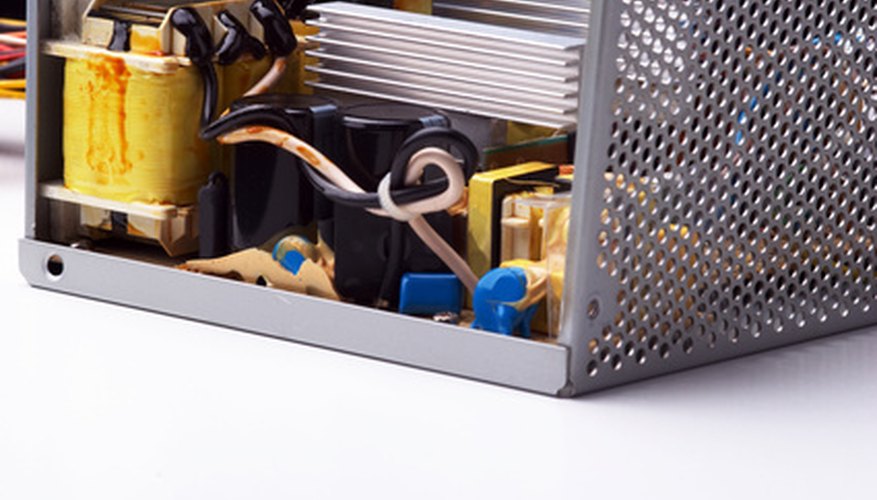Bridge rectifiers are used to convert AC power from the wall outlet into DC power; rectifiers are common in consumer electronics that require DC power. Internally, a bridge rectifier contains four diodes; all of them must function perfectly. A faulty bridge rectifier often causes DC power supplies to fail. Any of the individual diodes might be open when forward biased, or one of them might leak current when reverse biased. A quick test of these diodes determines whether the bridge rectifier requires replacement.
- Bridge rectifiers are used to convert AC power from the wall outlet into DC power; rectifiers are common in consumer electronics that require DC power.
- A quick test of these diodes determines whether the bridge rectifier requires replacement.
Identify the markings on the bridge rectifier. The markings are usually printed in white or black, depending upon whether the bridge rectifier's packaging is black or grey, respectively. A typical bridge rectifier has two pins marked with "AC," or with a wave symbol to represent the incoming signal. The plus and minus symbols on the package mark the respective postive and negative DC outputs of the device.
Prepare the digital multimeter for the diode check. Plug the probes into the digital multimeter. Turn on the multimeter and set it to the diode-tester function, as directed by the instructions for your specific model.
- Prepare the digital multimeter for the diode check.
- Turn on the multimeter and set it to the diode-tester function, as directed by the instructions for your specific model.
Test the AC inputs. Touch the one probe lead to the one of the AC inputs and the other lead to the remaining input. The meter typically indicates an overload, meaning there is too much resistance to measure. Swap the leads at the inputs and repeat this process. Any numerical readout indicates that a diode is leaking current in the reverse-biased direction.
Test the individual diodes. Touch the positive lead to an AC input, and the negative lead to the positive output. Observe the reading. Swap the leads, and check the reading on the meter display. Repeat this process for the other AC input. A successful check generally reveals that one diode conducts in the forward-biased direction, indicated on the meter as a turn-on voltage of about 0.7 volts. Repeat this same procedure between the AC inputs and the "negative" output. Remove the leads and turn off the meter .
- Test the individual diodes.
- Swap the leads, and check the reading on the meter display.
Determine whether the bridge rectifier is usable. If all diodes pass this check test, the rectifier is safe to use. It should be replaced if even one diode leaks.
WARNING
Only test bridge rectifiers that have no power connected to them.
